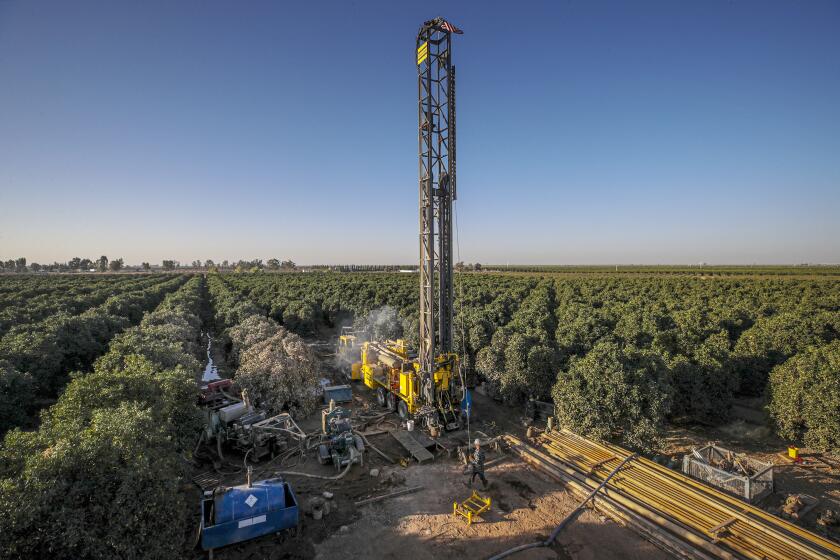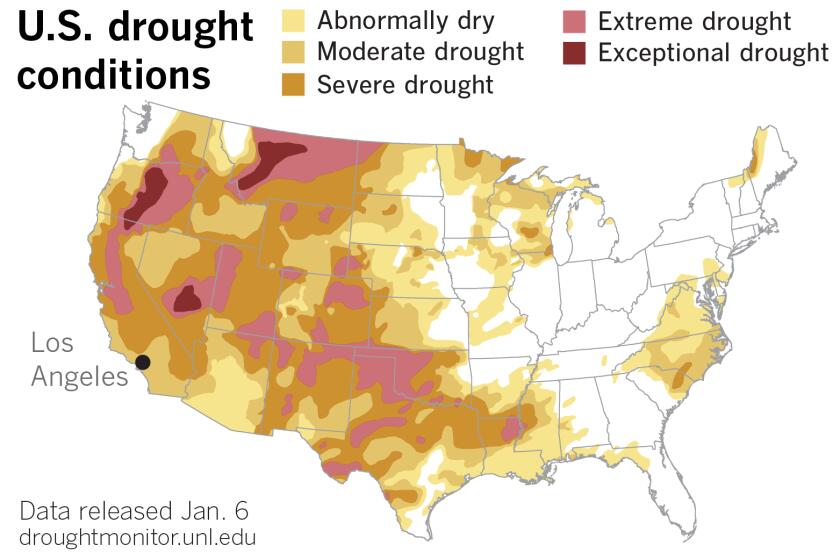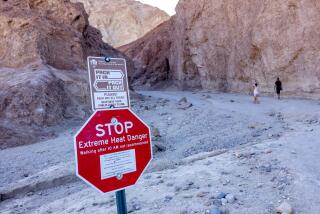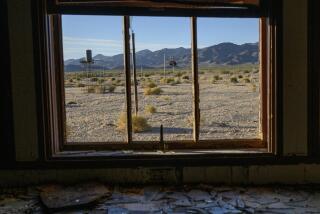Rising heat and hardships could hit San Joaquin Valley within three decades, study predicts
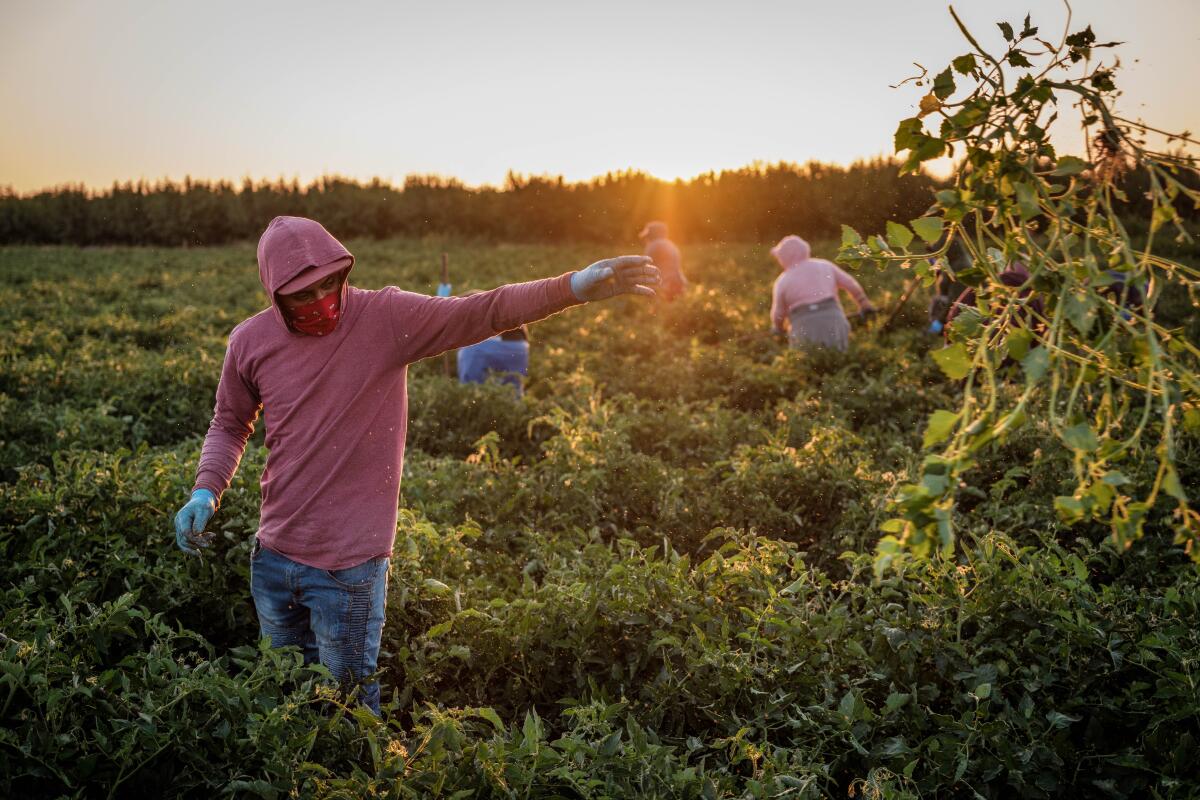
- Share via
Within three decades, the San Joaquin Valley’s annual average temperature could increase by 4 degrees, worsening water quality and health hazards in the impoverished communities of California’s agricultural heartland, according to a new regional climate change report.
Those hit hardest by the increasing heat will be poor farming communities that lack the resources necessary to adapt, according to the UC Merced report. That conclusion was based on dozens of recent scientific studies on a variety of issues related to climate change, and assumes a worst-case scenario for global carbon emissions.
“Many families in San Joaquin Valley rely on agriculture as their main source of income,” said Jose Pablo Ortiz-Partida, a climate and water scientist for the Union of Concerned Scientists and co-author of the report. “Now, climate change is gunning for them. They need all the help they can get.”
The report, part of California’s Fourth Climate Change Assessment, paints a dire portrait of life in the southern Central Valley as increasing water scarcity, poverty, low air quality and rising temperatures conspire to erode health, economic opportunity and environmental resources for the region’s most disadvantaged.
“Not every San Joaquin Valley community has the resources to become climate-resilient — and that breaks my heart,” said Ortiz-Partida, who collaborated on the 99-page report with researchers at UC Merced and Cal State Fresno. “Climatic changes are coming on too fast. Wells are already going dry, and more and more people are struggling for basics such as food and clean water in a region of 4.3 million residents — 55% of whom live in poverty.”
The valley’s annual average maximum temperature increased by 1 degree from 1950 to 2020, the report says, and is projected to increase by as much as 4 to 5 degrees by midcentury.
Read all of our coverage about how California is neglecting the climate threat posed by extreme heat.
If heat-trapping greenhouse gases continue to rise at high rates, the report suggests, half of the Valley’s eight counties will have average annual maximum temperatures over 80 degrees by the end of the century, which is more than an 8-degree increase compared with historical conditions.
Chronic diseases and heatstroke will probably increase with climate change, according to the report, along with “deterioration of private property, canals, dams, roads, and railways. Levees protecting floodplains, cities, and farmlands will become more unstable due to increasing land subsidence, droughts and associated over-pumping, wildfires and floods.”
These changes are already underway in the nation’s leading agricultural center, renowned for its abundance of row crops, dairies, grapes, almonds and pistachios. The changes are due to a convergence of forces: increasingly frequent droughts and heat waves that are fueled by climate change; new environmental protections and state groundwater regulations; and cutbacks in water allocations, authors say.
As Valley farmers have continued to drill more and deeper wells, groundwater levels have plummeted. At the same time, pesticides and nitrates from fertilizer and animal waste have leached into the groundwater supplies of small farming communities such as Tooleville, East Orosi and East Porterville in Tulare County and Tombstone Territory in Fresno County.
Some rural communities in unincorporated areas have attracted international attention after wells that had served them for more than half a century went dry or became polluted.
Despite a California law intended to end over-pumping of aquifers, a frenzy of agricultural well drilling continues in the San Joaquin Valley.
On Friday, some nonprofit groups dedicated to improving the lives of the Valley’s farming communities withheld immediate comment on the report pending more time to study its grim forecasts.
“This report is unbelievably depressing,” said Riddhi Patel, a spokeswoman for the Center on Race, Poverty & the Environment.
The report is not all bad news, however. It recommends a series of proposals that could “bring environmental justice and economic opportunities to the San Joaquin Valley as we face increasingly severe climate impacts.”
For example, it suggests “repurposing land surrounding rural disadvantaged communities into green areas, aquifer recharge projects, and wildlife corridors, cleaner industry, solar panels, and other clean socioeconomic opportunities.”
As wet as December was, California’s drought continues to hang on.
“Promoting cleaner energy sources for heating and cooling,” it suggests, “including industry, institutions and households, will reduce greenhouse gas emissions and improve air quality in the San Joaquin Valley.”
“These recommendations could become possible moneymakers,” Ortiz-Partida said, “and bring the Valley back to life with more family farms.”
Four years in the making, the report was requested by the California Natural Resources Agency, the California Energy Commission and the California Department of Water Resources. Funding came from a group of institutions led by UC Merced.
Getting low-income communities to transition to electric cars is a key climate challenge for California and the nation. A rural city is paving the way.

